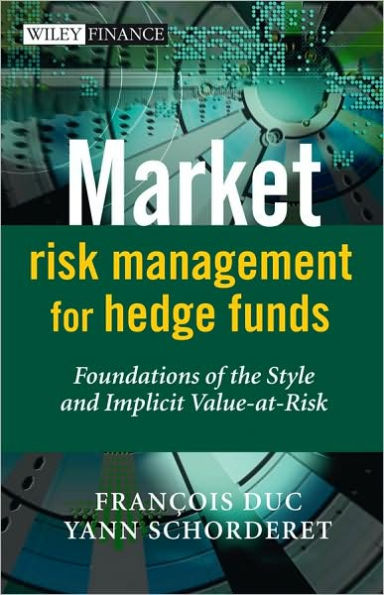Table of Contents
Contents Acknowledgements
1 Introduction
Part I Fundamentals for Style and Implicit Values-at-Risk
2 Ongoing Institutionalization
2.1 Hedge funds industry size and asset flows
2.2 Style distribution
2.3 2006-2007 structural developments
2.4 Are hedge funds becoming decent?
2.5 Funds of hedge funds persistence
3 Heterogeneity of Hedge Funds
3.1 Testing sample
3.2 Smoothing effect of a restrictive classification
3.3 Heterogeneity revealed through Modern Cluster Analysis
3.4 Appendix A: Indices sample
4 Active and Passive Hedge Fund Indices
4.1 Illusions fostered by active hedge fund indices
4.2 Passive indices and the illusion of being clones
4.3 Conclusion
5 The Four Dimensions of Risk Management for Hedge Funds
5.1 Operational and structural risk
5.2 Risk control
5.3 Delegation risk
5.4 Direct investment risk
5.5 Conclusion
5.6 Appendix B: Risks embedded with some classical alternative strategies
5.7 Appendix C: Other common risks to hedge funds
Part II Style Value-at-Risk
6 The Original Style VaR Revisited 77
6.1 The Multi-Index Model
6.2 The Style Value-at-Risk
6.3 Backtesting revisited
7 The New Style Model
7.1 Extreme Value Theory
7.2 Risk consolidation
7.3 The New Style Model
7.4 Appendix D: Algorithms for the elemental percentile method
7.5 Appendix E: Copulas
8 Annualization Problem
8.1 Annualization of the main statistical indicators assuming i.i.d.
8.2 Annualization of Value-at-Risk assuming i.i.d.
8.3 Annualization without assuming i.i.d.
8.4 Applications to the Style Value-at-Risk
8.5 Appendix F: annualization of excess kurtosis
8.6 Appendix G: Drost and Nijman Theorem
Part III Implicit Value-at-Risk
9 The Best Choice Implicit Value-at-Risk
9.1 Alternative style analysis and BCI Model
9.2 Theoretical framework of BCIM
9.3 Best Choice Implicit VaR
9.4 Empirical Tests
10 BCI Model and Hedge Fund Clones
10.1 Ten-Factor Model
10.2 Non-Linear Model
11 Risk Budgeting
11.1 Value-at-Risk of a multi-managers portfolio
11.2 Risk decomposition: 'before and after' attribution
11.3 Risk decomposition: closed form attribution
12 Value-at-Risk Monitoring
12.1 Analyzing graveyards and hedge funds demise
12.2 The probit model
12.3 Empirical evidence
12.4 Implications for portfolio management
13 Beyond Value-at-Risk
13.1 2007–2008 liquidity crisis and hedge funds
13.2 Mechanical stress test
13.3 Liquidity-adjusted Value-at-Risk
13.4 Limit of liquidity-adjusted Value-at-Risk and liquidity scenario
Bibliography
Index




